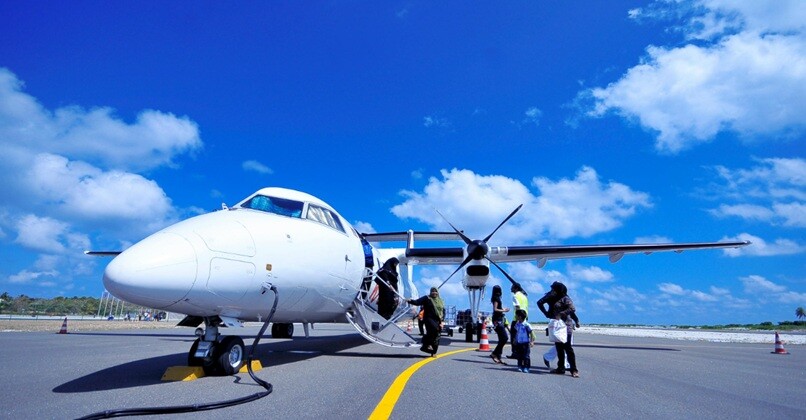Aircraft ground handling is a critical component of the aviation industry, ensuring that aircraft are serviced, maintained, and ready for the next flight. The efficiency and safety of ground handling processes have a direct impact on airline and airport operations. This article will explore six critical changes that can considerably improve aircraft ground handling operations.
1. Advanced Ground Support Equipment (GSE)
Investing in sophisticated Ground Support Equipment (GSE) is one of the most significant ways to improve aircraft ground handling operations. This equipment might include anything from aircraft tugs to fuel trucks, air starters, and luggage handling systems.
Automated baggage handling systems, for example, can greatly reduce human error, limit luggage damage, and speed up the loading and unloading of bags from the airplane. Modern fuel trucks are equipped with precise measurement instruments to ensure that the correct amount of gasoline is supplied to the aircraft.
2. Integration of Digital Technology for Real-Time Data Management
Digital technology integration is another important advancement that has the potential to significantly enhance aircraft ground handling operations. Digital systems can improve communication across teams, ensuring that everyone involved in ground handling is informed of the aircraft’s condition, fueling requirements, cargo movements, and any other pertinent information.
Real-time data management enables ground handling teams to predict delays or issues before they occur, allowing for swift decisions and seamless operations. This proactive approach helps to avoid costly delays and ensures that aircraft are constantly prepared for their next departure with minimal downtime.
3. Automated Aircraft Maintenance Systems
Automated airplane maintenance systems are another improvement that has transformed ground handling for aircraft. Complicated machines, aircraft, need constant inspection, maintenance, and servicing to stay airworthy. These jobs were done by hand historically and frequently resulted in human mistakes or neglected maintenance plans.
By incorporating these automated solutions, airlines and ground handlers can shorten turnaround times while maintaining the greatest levels of safety. You can use high-quality aviation engine oil, which is critical to the engine’s performance and durability. In many circumstances, aircraft engines can be automatically topped off with the necessary oil when the system detects low levels, minimizing the need for manual checks and enhancing the aircraft’s overall reliability.
4. Enhanced Safety Protocols and Training
In aviation, safety is always a first concern; so, it is imperative to enhance safety procedures in ground handling operations to guarantee staff and passenger welfare and to prevent mishaps. Wearable technology, for example, can enable ground handling personnel to remain aware of any threats, such as aircraft proximity, moving vehicles, or extreme weather conditions.
Improved training courses also guarantee that ground handling employees follow rigorous safety procedures and are completely qualified to run sophisticated equipment. Ground handling operations’ efficiency and safety can be raised even more by regular safety exercises, usage of virtual reality (VR) for training simulations, and awareness campaigns.
5. Sustainable Fuel and Resource Management Practices
Improving fuel and resource management techniques inside aircraft ground handling becomes even more crucial given the increased attention to environmental sustainability. Modern ground handling practices are implementing resource-efficient techniques and green projects involving the usage of sustainable fuel alternatives.
Using ground service equipment and electric-powered tugs, for instance, lessens dependency on fossil fuels, therefore lowering emissions and the environmental impact of ground handling operations. Improved methods of resource management also guarantee effective use of fuel, therefore lowering needless waste. Airports and airlines are also using smart fuel monitoring systems to guarantee correct, non-excess refills of aircraft, therefore saving expenses and resources.
6. Upgraded Aircraft Handling Systems and Communication Tools
Ground handling staff, pilots, and airport management can all work together more effectively thanks to improved communication tools and aircraft handling technology. Ground crews can maintain constant contact with the cockpit via real-time communication technologies such as radio systems and smartphone apps, ensuring that any last-minute requests, weather changes, or operational adjustments are addressed immediately.
Furthermore, updating airplane handling systems allows ground workers to streamline the entire aircraft preparation for flight. Improved scheduling systems, automatic checklists, and easier coordination can be included for catering, replenishing, and cleaning purposes. Ground handling processes can be completed faster and more precisely by enhancing communication and coordination, thus minimizing the chances of delays or mistakes that can endanger flight plans.
Conclusion
Improving aircraft ground handling operations is critical to boosting efficiency, safety, and sustainability in the aviation sector. Airlines and airports can guarantee faster turnaround times, higher degrees of service, and lower running costs by investing in advanced Ground Support Equipment (GSE), integrating digital technology, automating maintenance systems, enhancing safety protocols, using sustainable practices, and enhancing communication. Modern airports and airlines depend on these fundamental improvements in fueling, maintenance, and safety to ensure that aircraft are constantly ready to take off on schedule.
You may also like to read,
- Airport Ground Equipment: The Many Machines Found on the Tarmac
- 5 Things to Know About Aviation Hydraulics
- 5 Educational Facts About Private Jets







